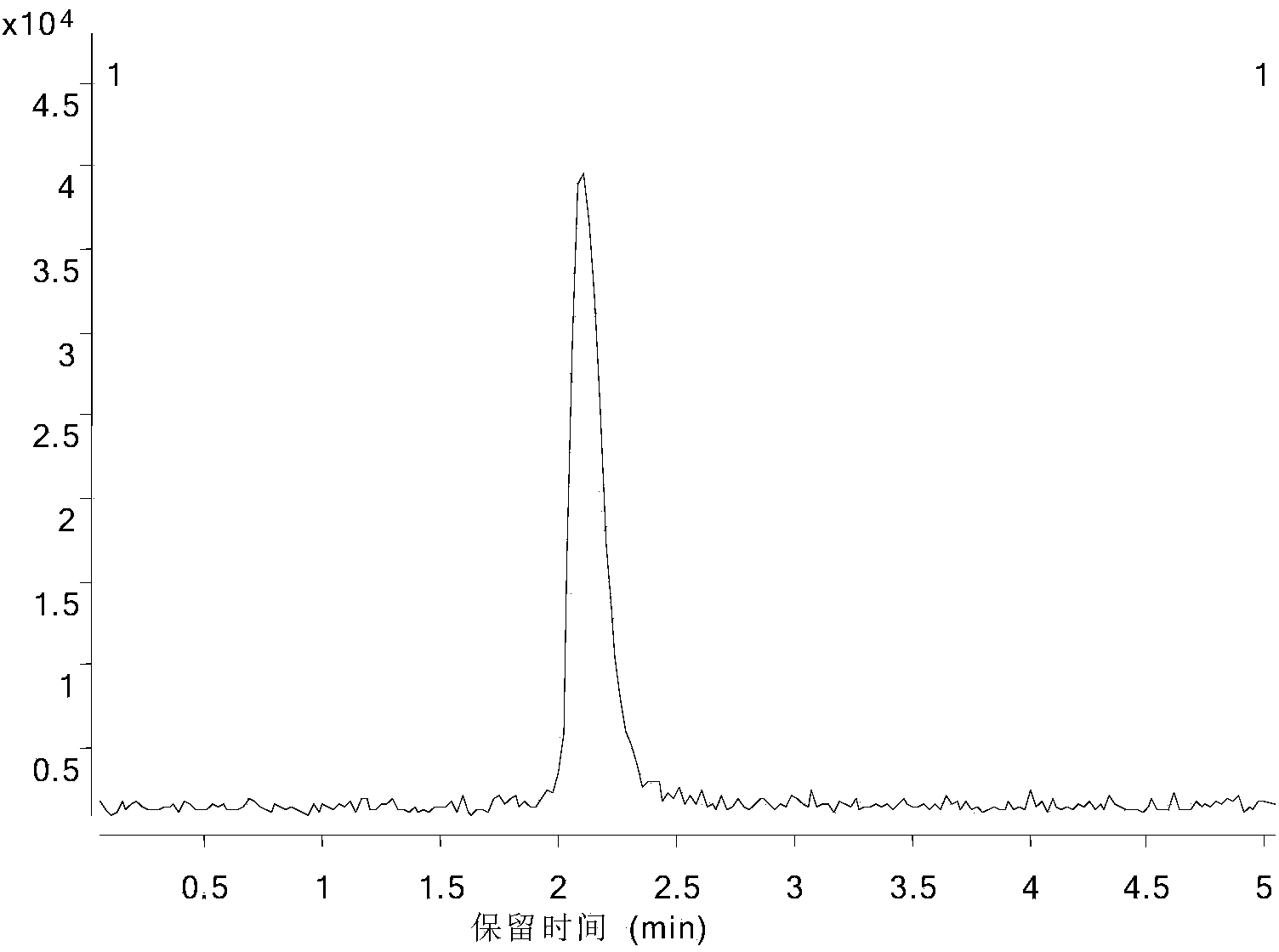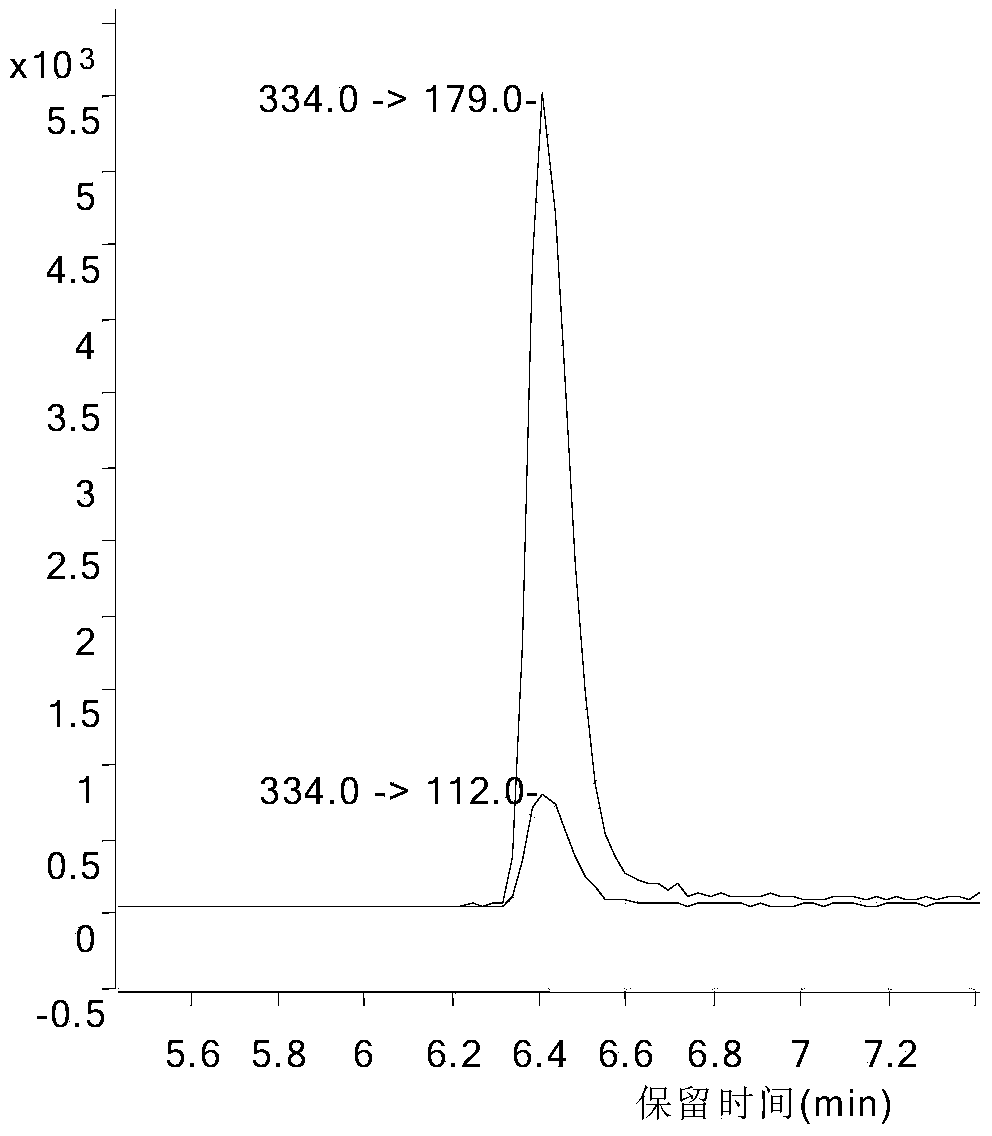Pretreatment method for strong-polarity pesticide residue detection
A technology for pesticide residue detection and strong polarity, which is used in the preparation of test samples to ensure recovery, remove impurities and reduce pollution.
- Summary
- Abstract
- Description
- Claims
- Application Information
AI Technical Summary
Problems solved by technology
Method used
Image
Examples
Embodiment 1
[0030] Example 1: Detection of paraquat residues in apples
[0031] (1) Sample pretreatment
[0032] Weigh 10.0 g of the homogenized apple sample into a 50 mL stoppered plastic centrifuge tube, add 10 mL of methanol aqueous solution, vortex for 1 min, centrifuge at 5000 r / min for 5 min, and the supernatant extract is to be purified. Take 2mL of the supernatant extract into a centrifuge tube containing 100mg C18 and 100mg PSA, vortex for 1min, centrifuge at 5000r / min for 3min, and pass the supernatant through a 0.22μm filter membrane for liquid chromatography-quadrupole time-of-flight series Mass Spectrometry (LC-Q TOF) Determination.
[0033] (2) Preparation of standard working solution
[0034] Weigh 25±0.1mg of the standard product into a 25mL plastic volumetric flask, dissolve it with acetonitrile, and dilute to obtain a 1000.0μg / mL standard stock solution; pipette 1.0mL of the standard stock solution into a 100mL plastic volumetric flask, and dilute to volume with aceton...
Embodiment 2
[0050] Example 2: Detection of glufosinate-ammonium, glyphosate and aminomethyl phosphate residues in carrots
[0051] (1) Sample pretreatment
[0052] Weigh 10.0 g of the thoroughly mixed carrot sample into a 50 mL stoppered plastic centrifuge tube, add 10 mL of aqueous methanol, vortex for 1 min, and centrifuge at 5000 r / min for 5 min. After centrifugation, take 2 mL of the supernatant extract into a centrifuge tube containing 100 mg of C18, vortex for 1 min, and centrifuge at 5000 r / min for 3 min. After the supernatant was passed through a 0.22 μm filter membrane, it was derivatized.
[0053] (2) Preparation of standard working solution
[0054] Weigh 25±0.1mg of standard substance into a 25mL plastic volumetric flask, dissolve with acetonitrile, and dilute to get 1000.0μg / mL standard stock solution; pipette 1.0mL each of glufosinate-ammonium, glyphosate and aminomethylphosphoric acid standard stock solution Place in a 100mL plastic volumetric flask, and dilute to volume...
PUM
| Property | Measurement | Unit |
|---|---|---|
| correlation coefficient | aaaaa | aaaaa |
Abstract
Description
Claims
Application Information
 Login to View More
Login to View More - R&D
- Intellectual Property
- Life Sciences
- Materials
- Tech Scout
- Unparalleled Data Quality
- Higher Quality Content
- 60% Fewer Hallucinations
Browse by: Latest US Patents, China's latest patents, Technical Efficacy Thesaurus, Application Domain, Technology Topic, Popular Technical Reports.
© 2025 PatSnap. All rights reserved.Legal|Privacy policy|Modern Slavery Act Transparency Statement|Sitemap|About US| Contact US: help@patsnap.com



